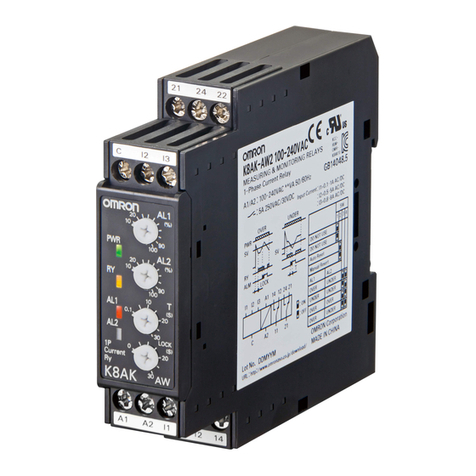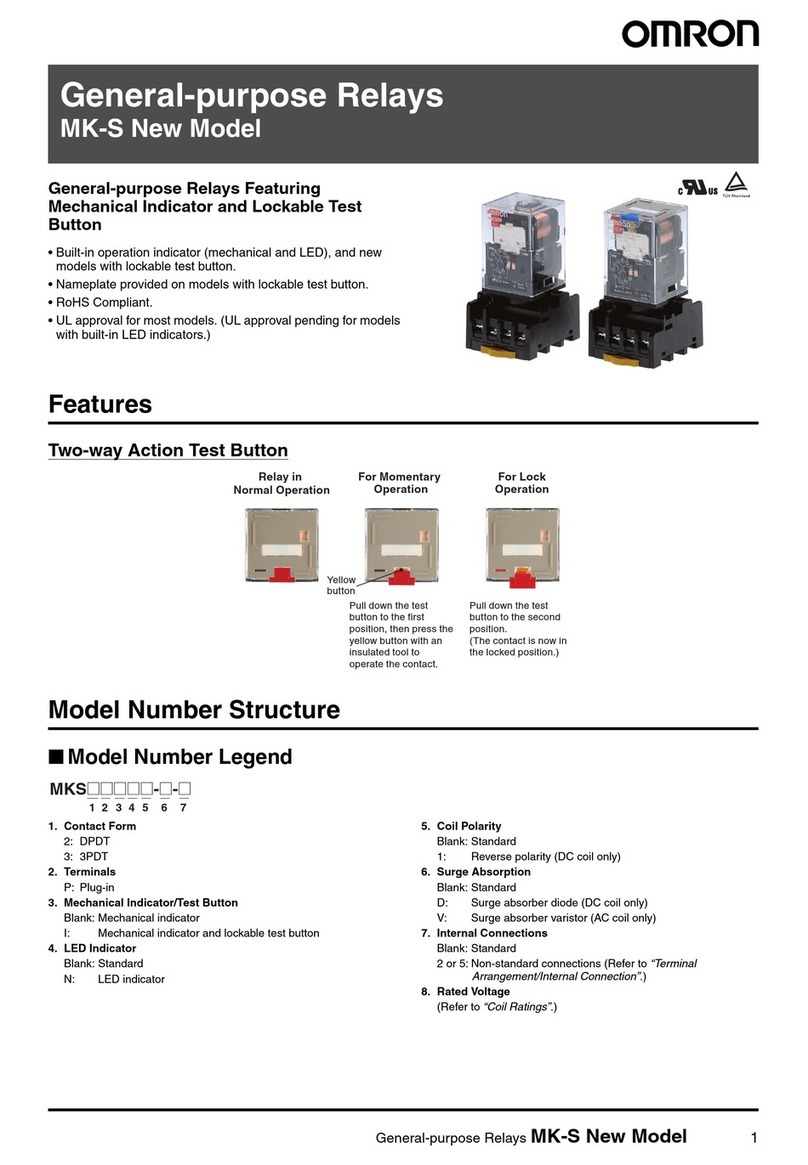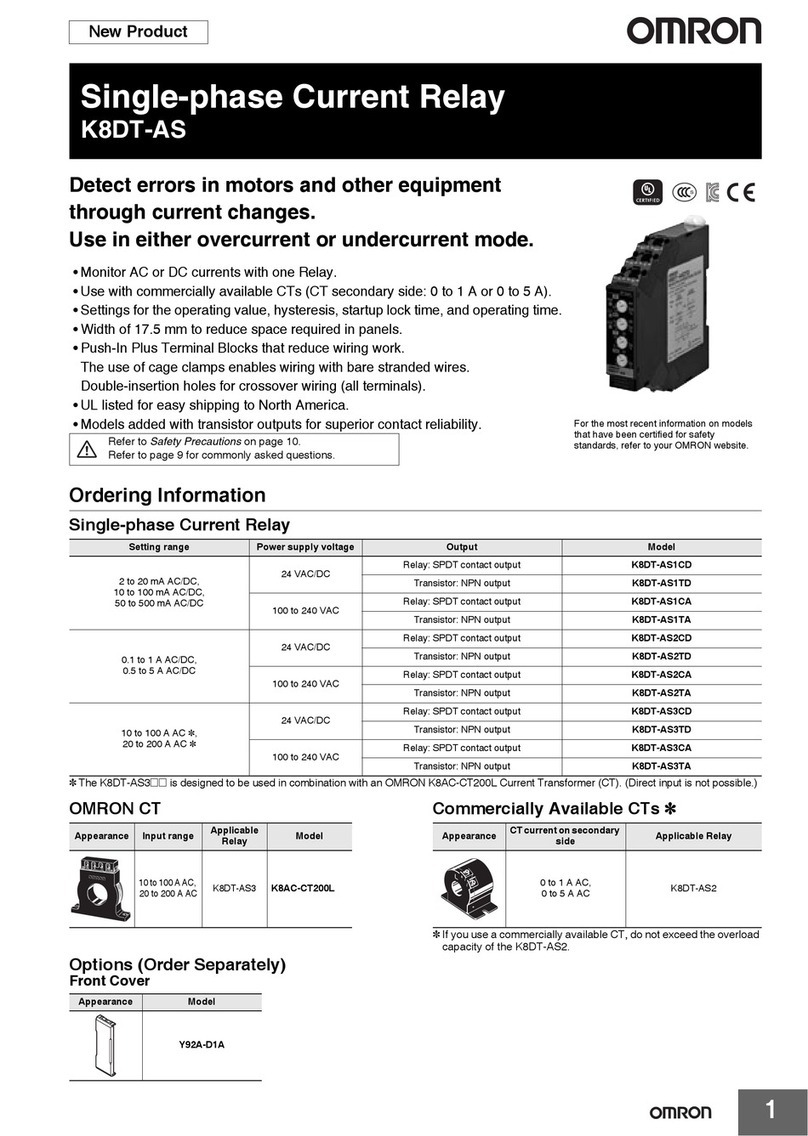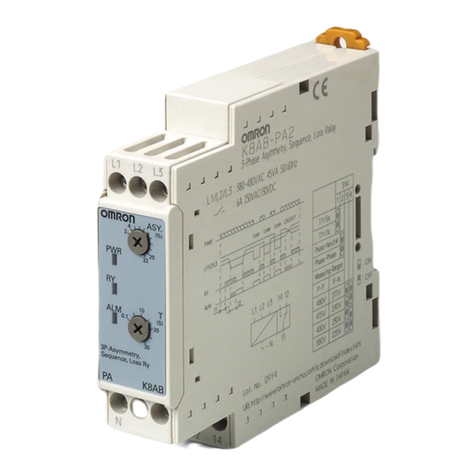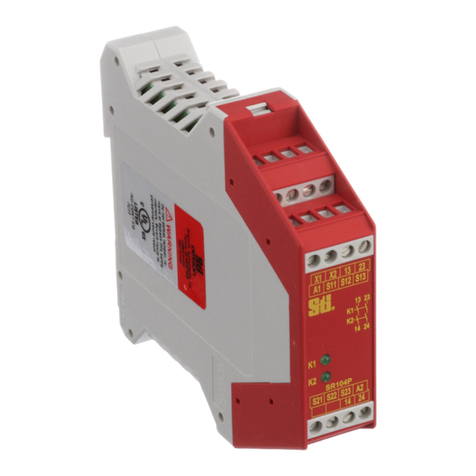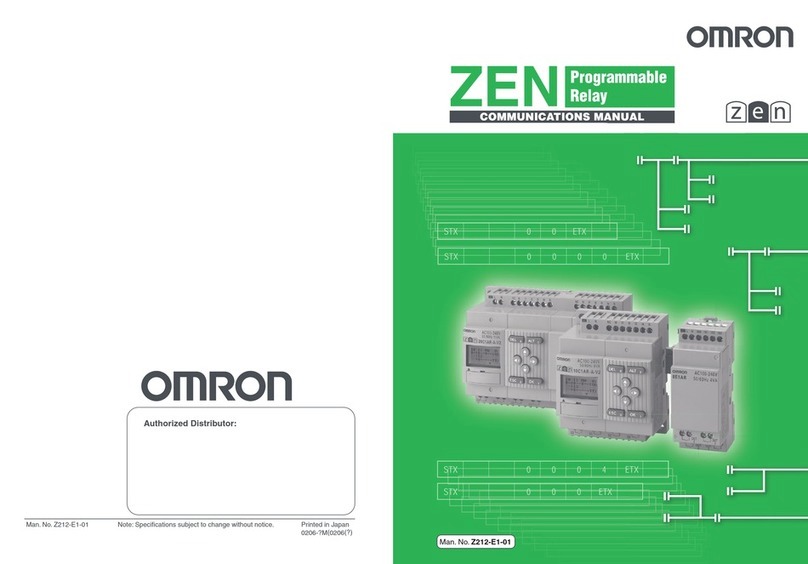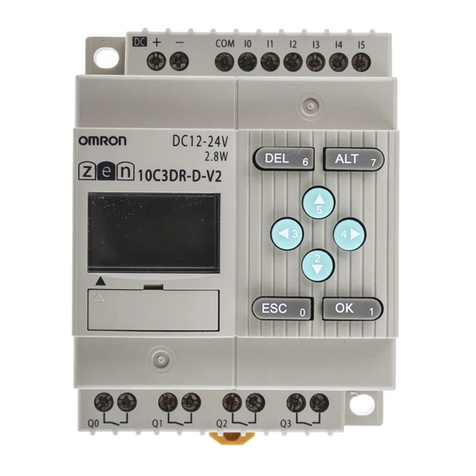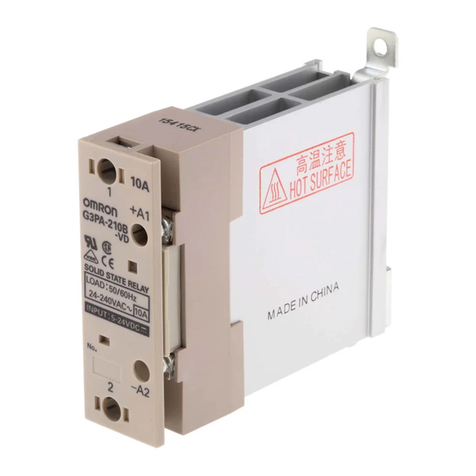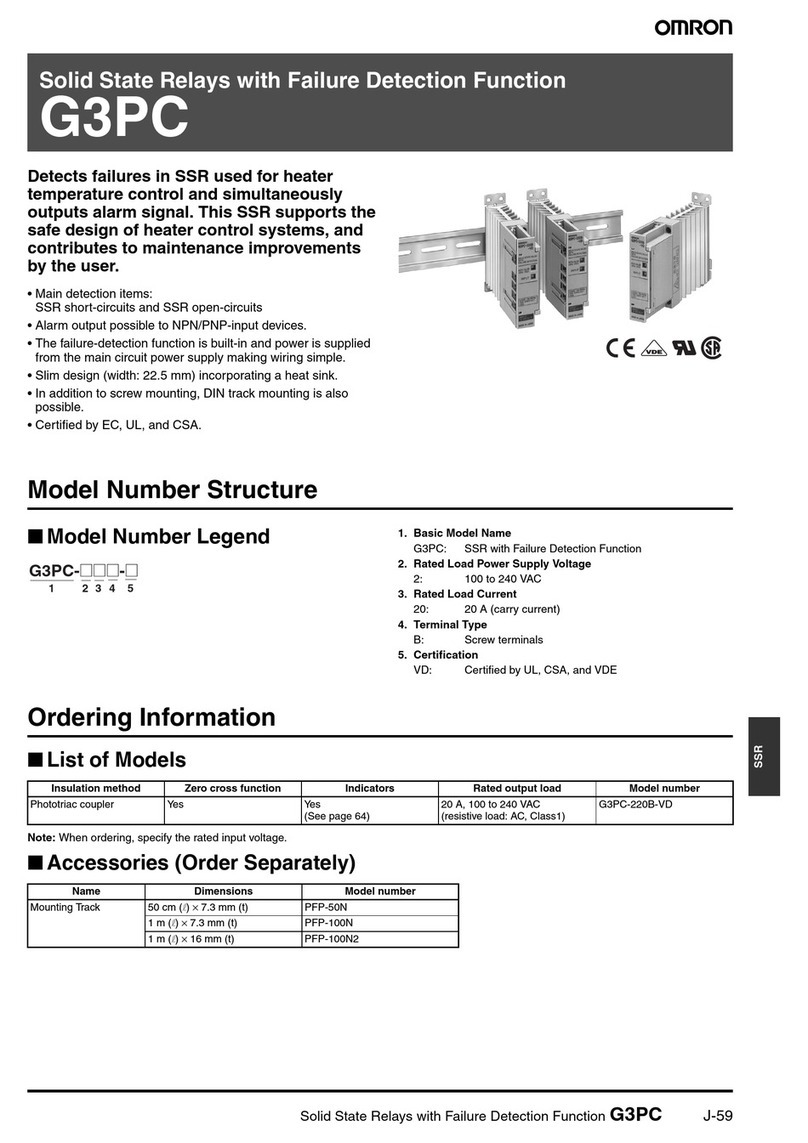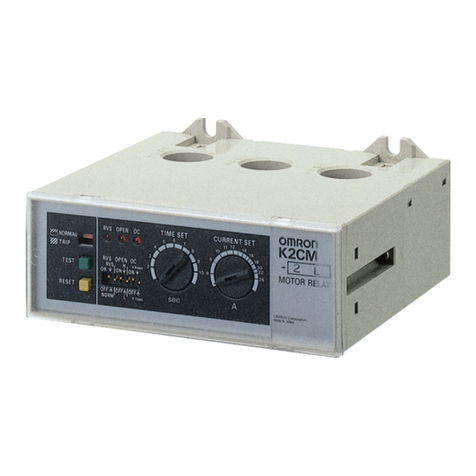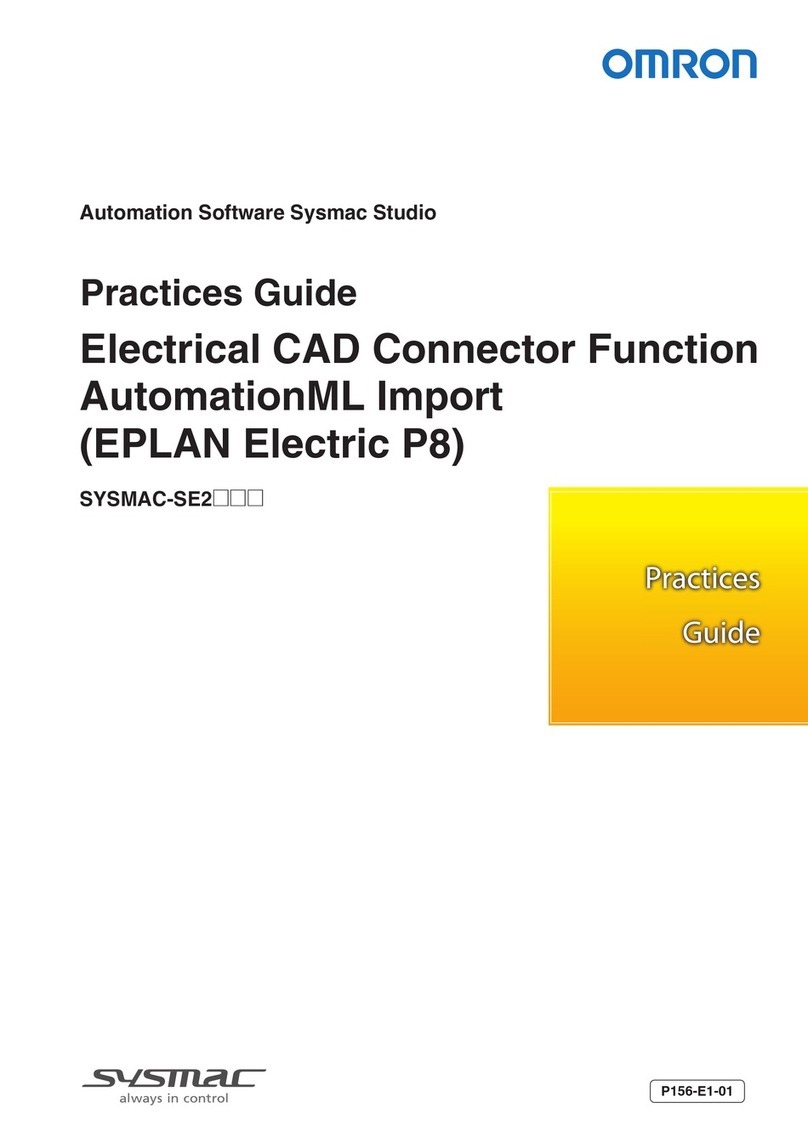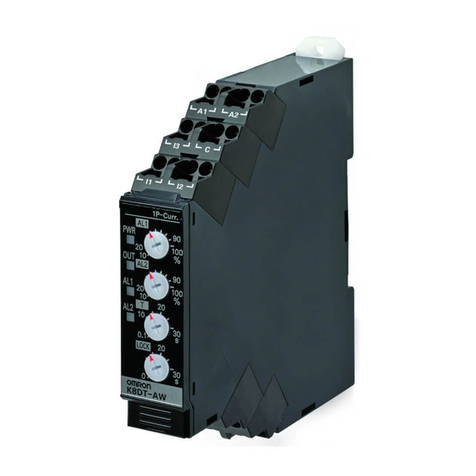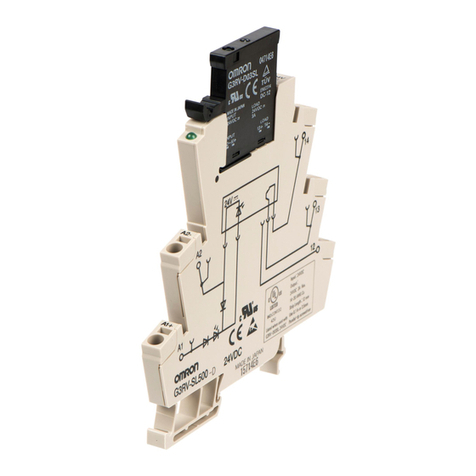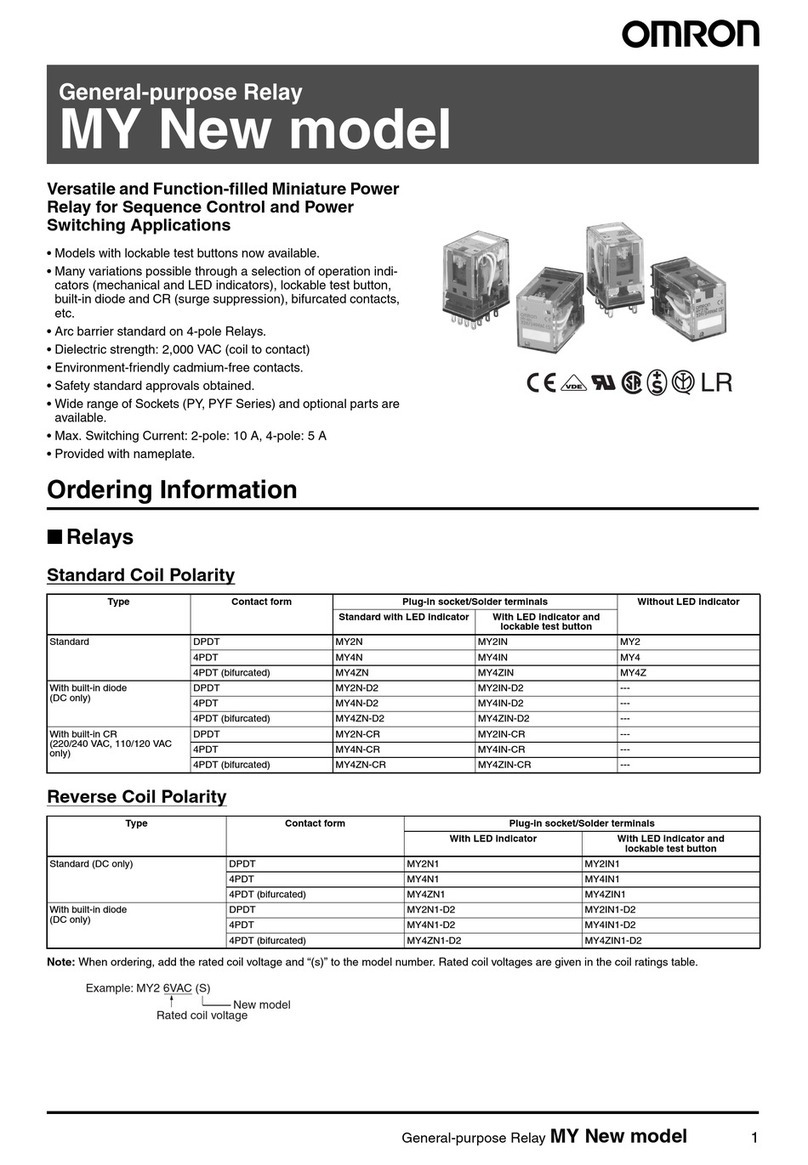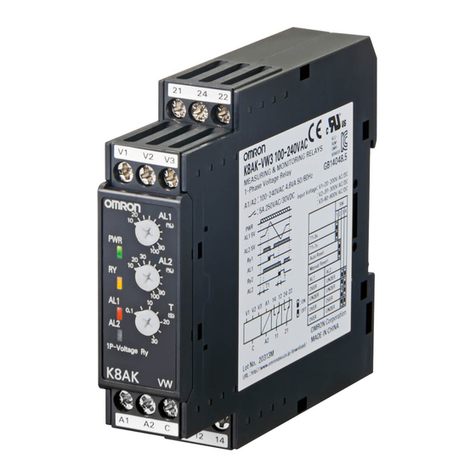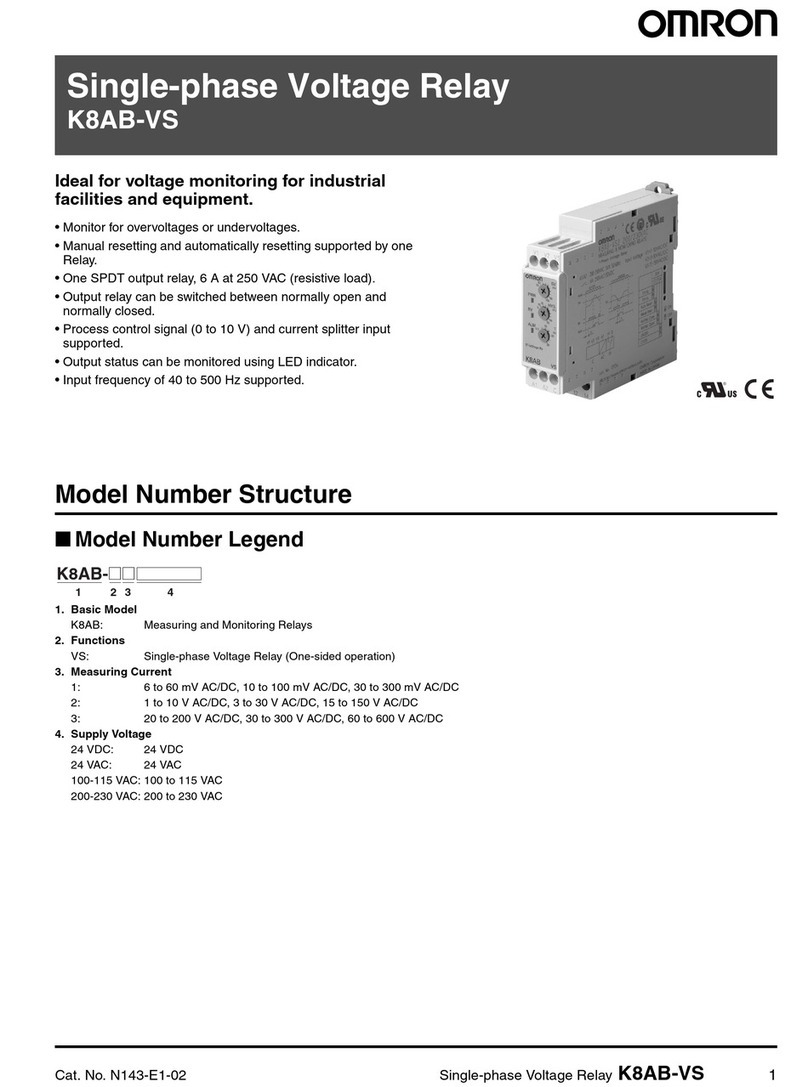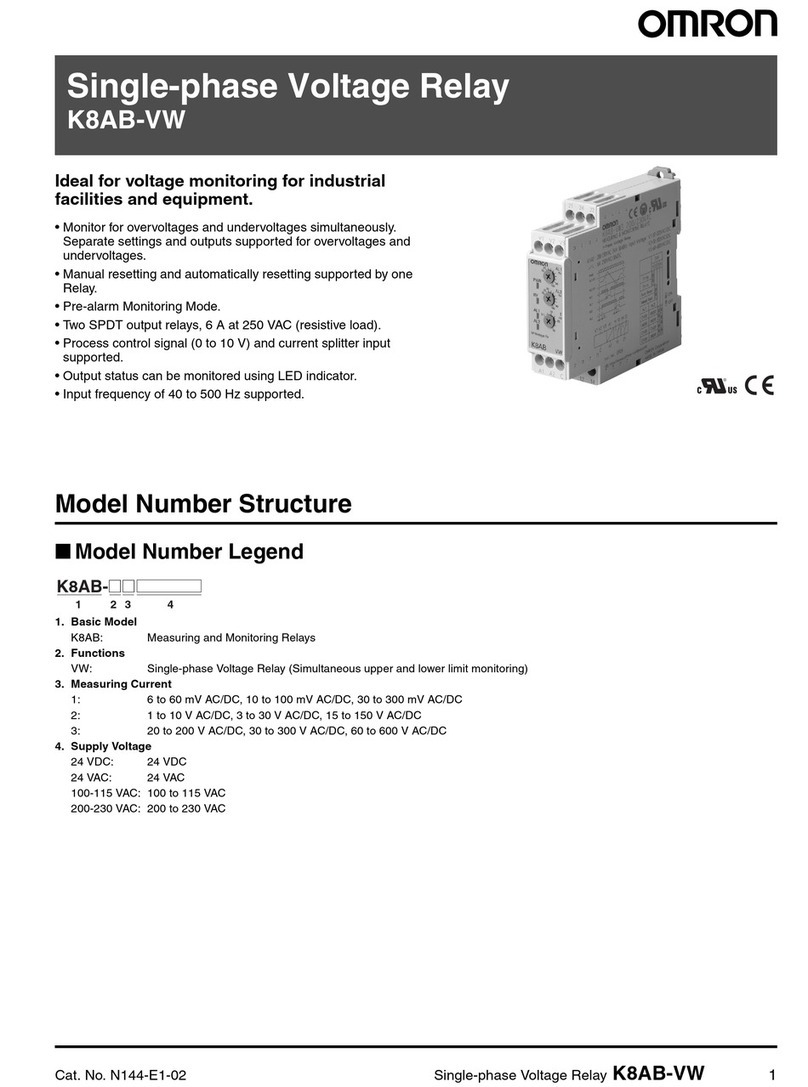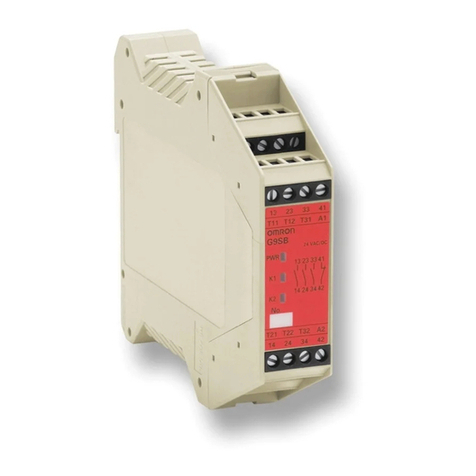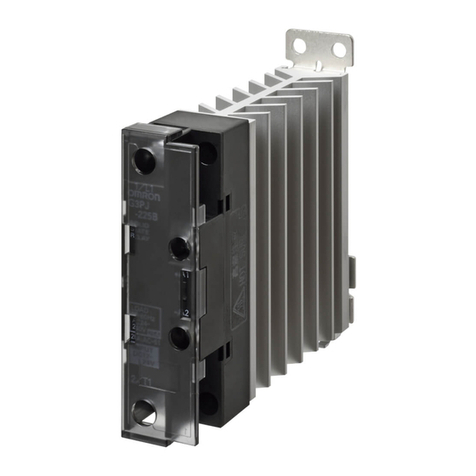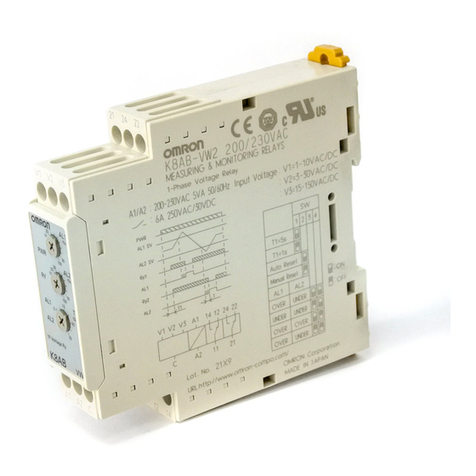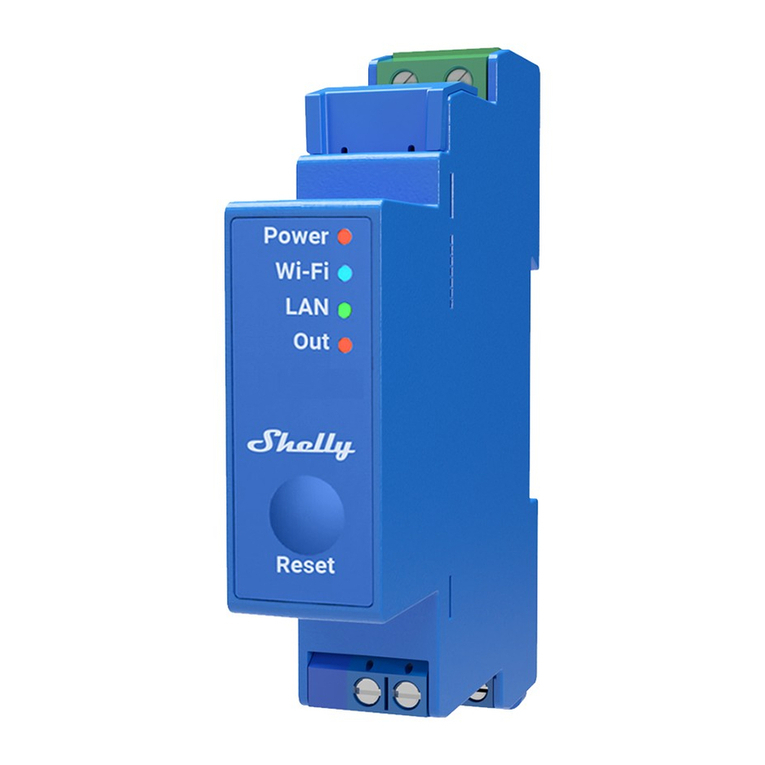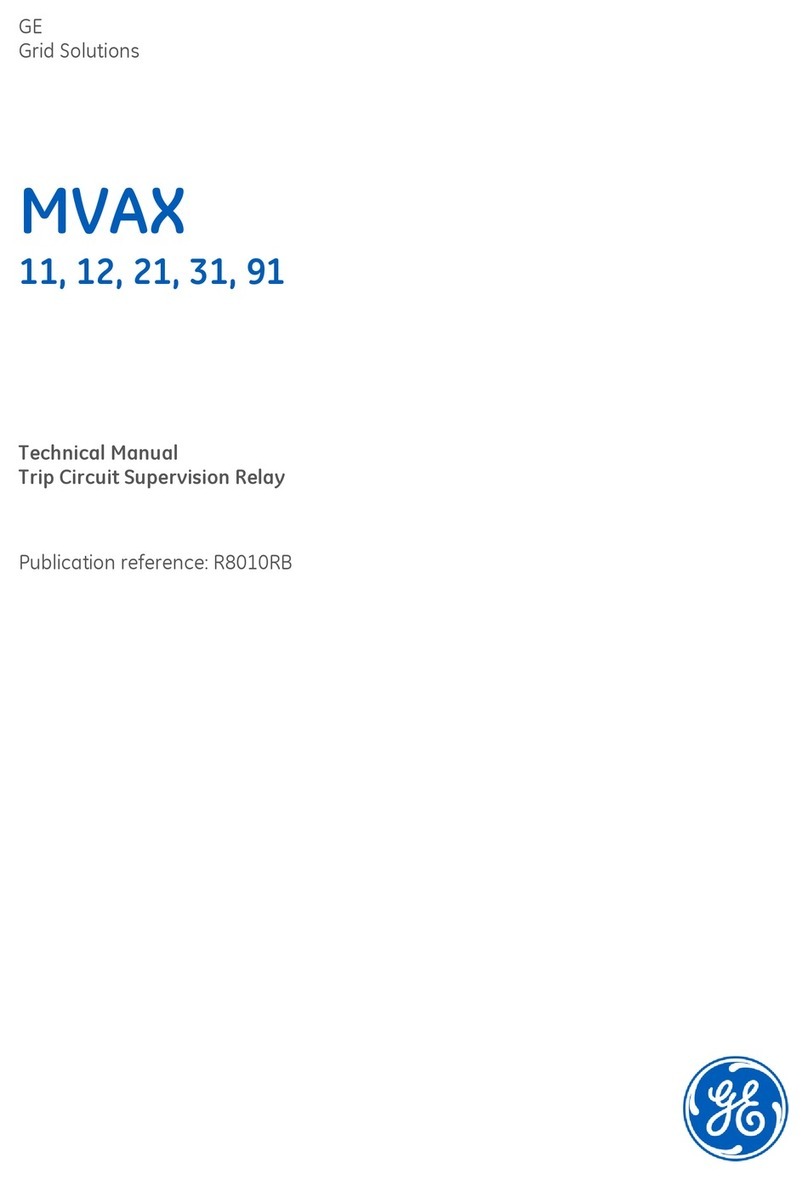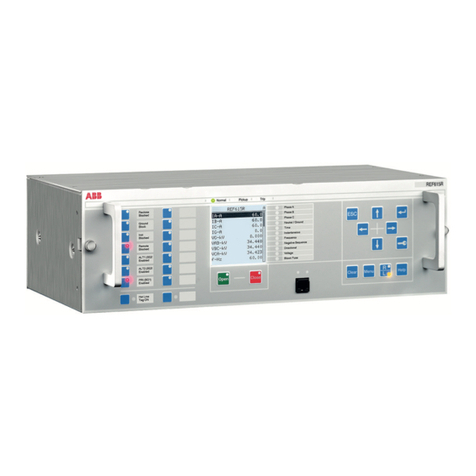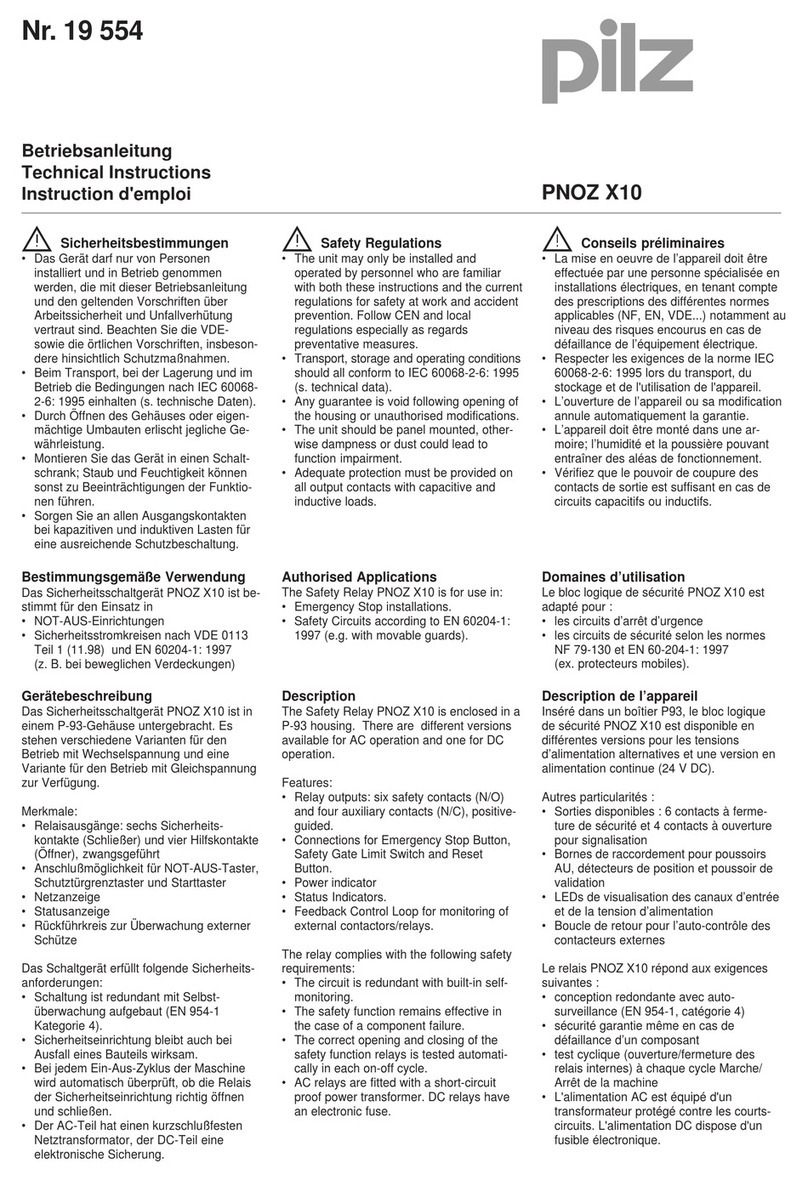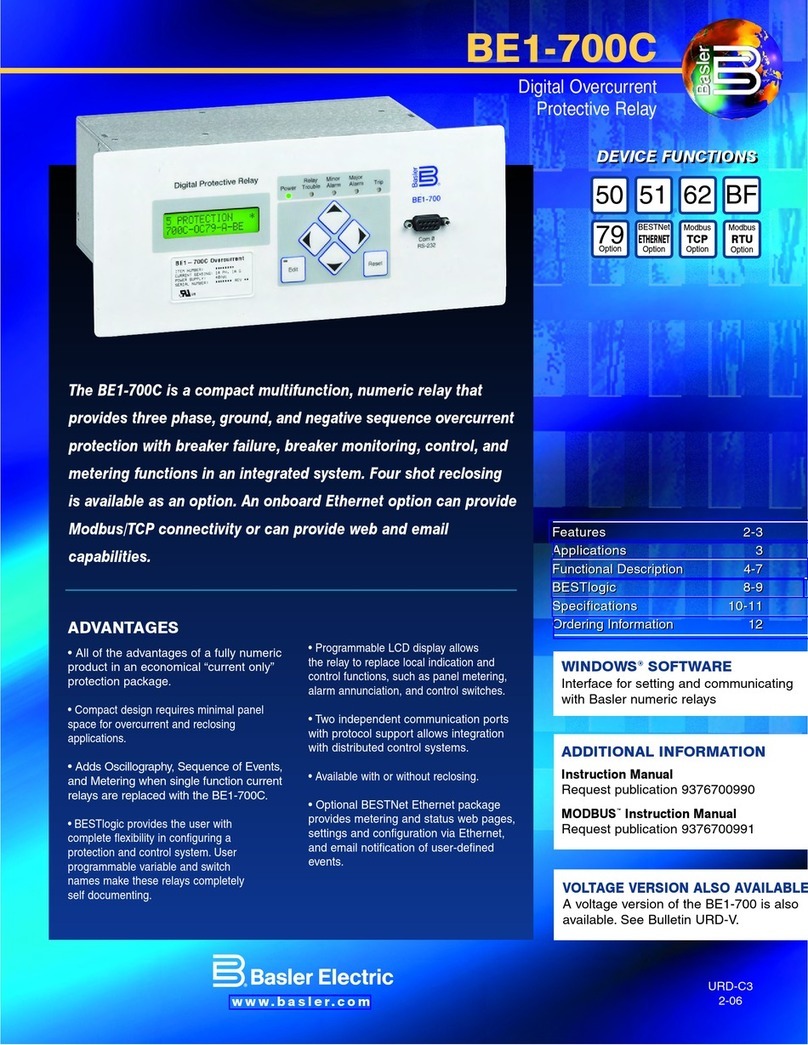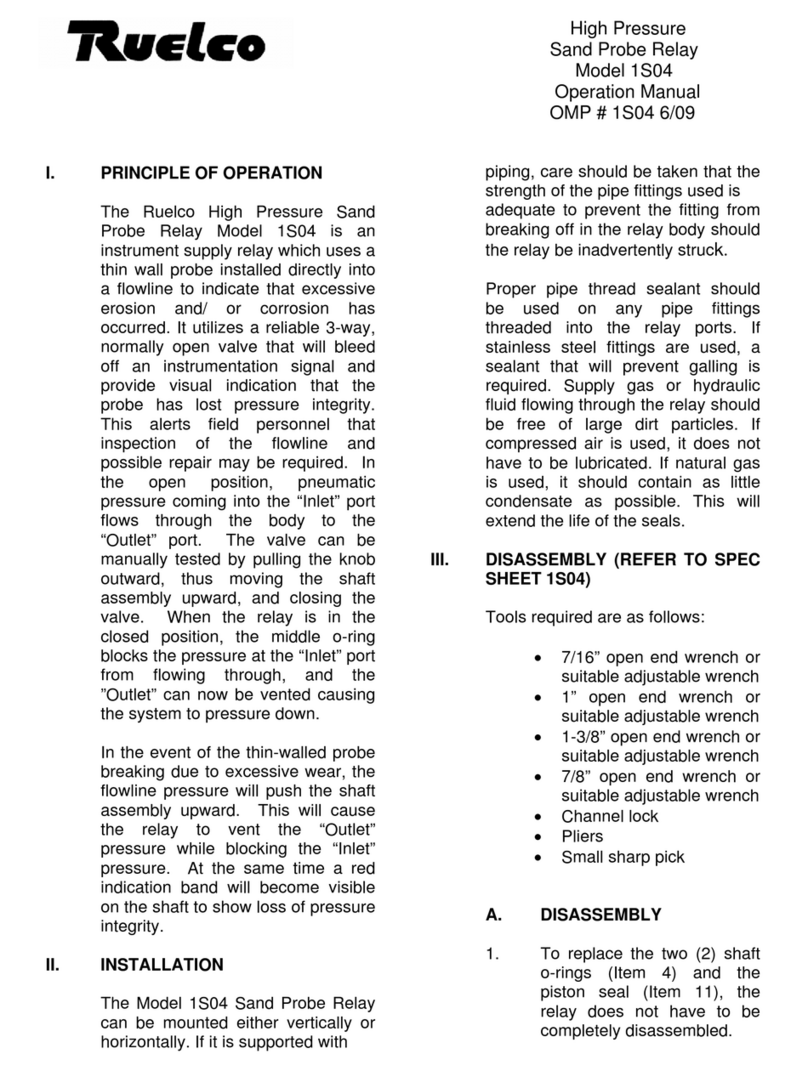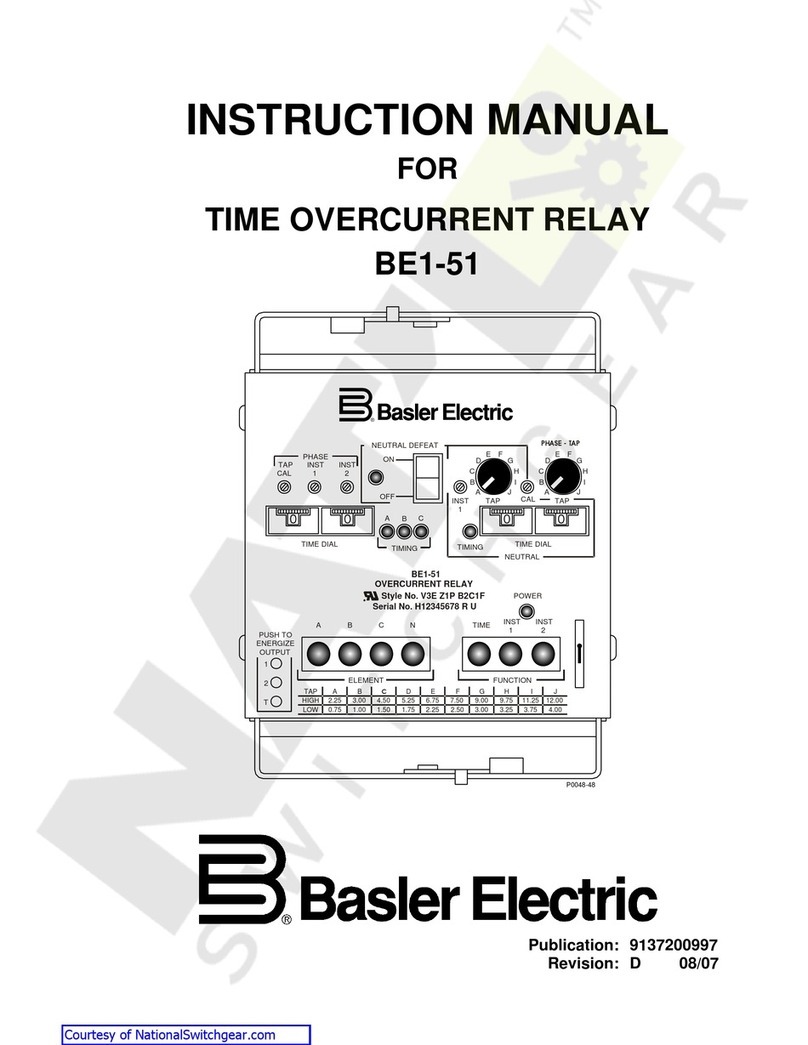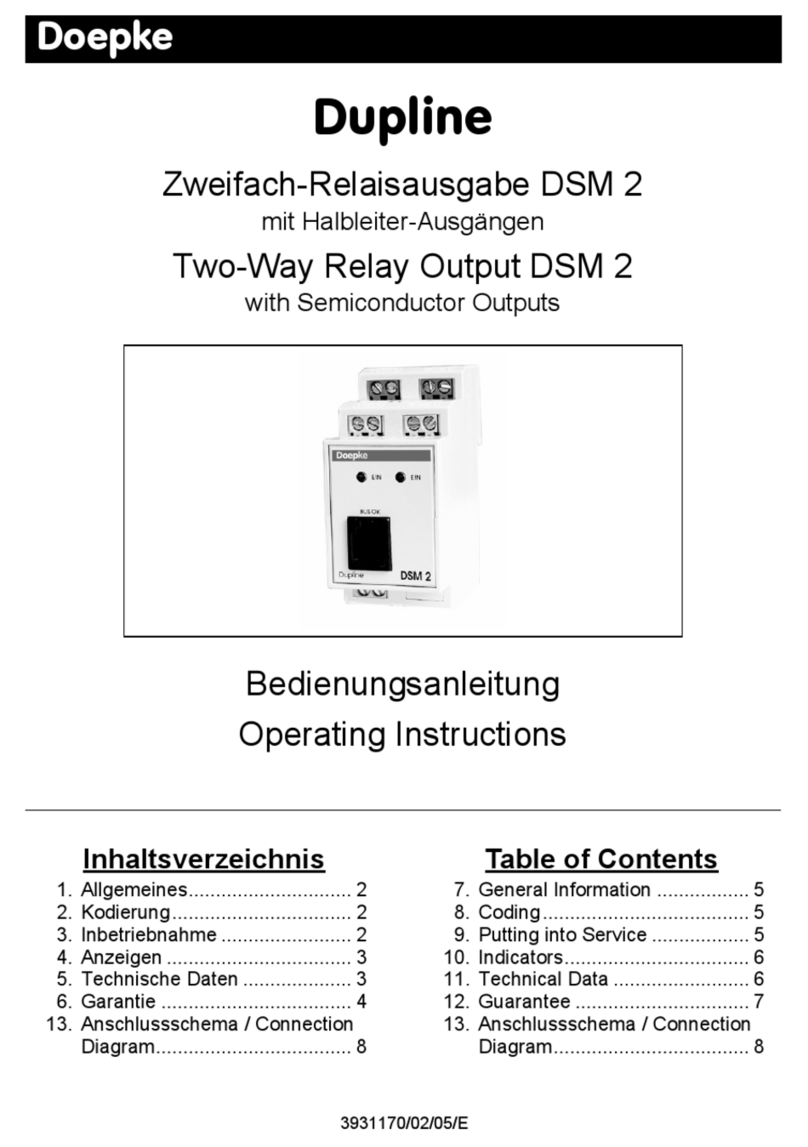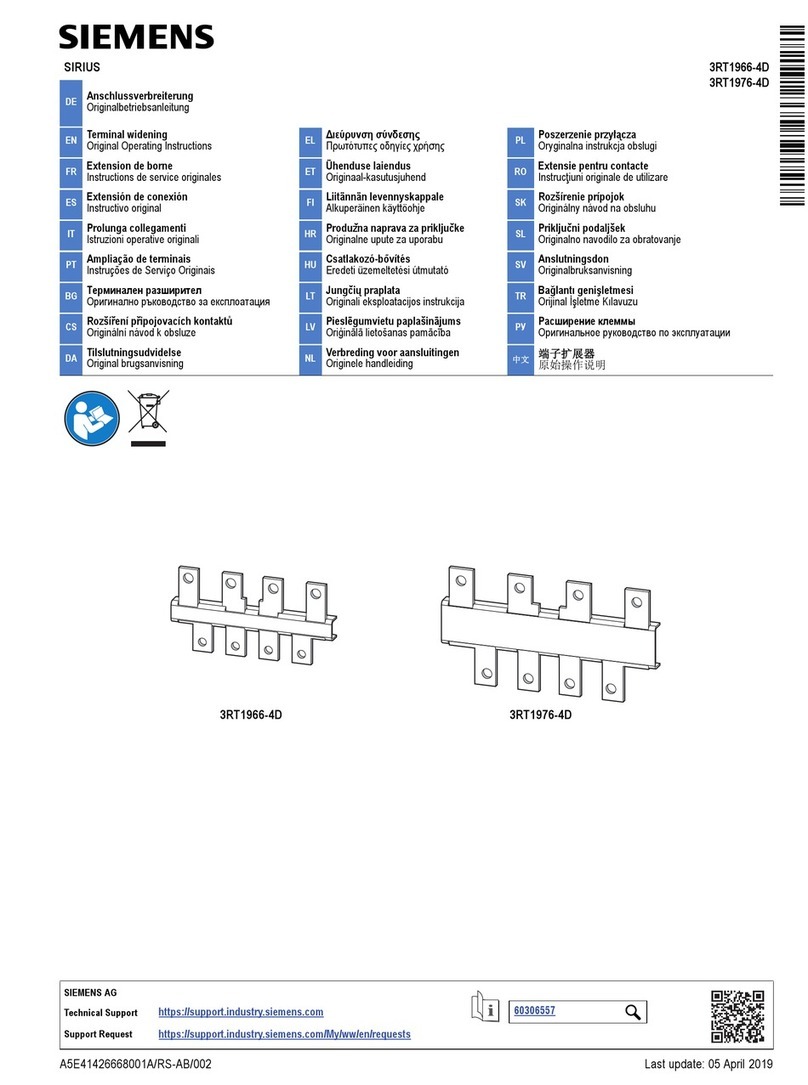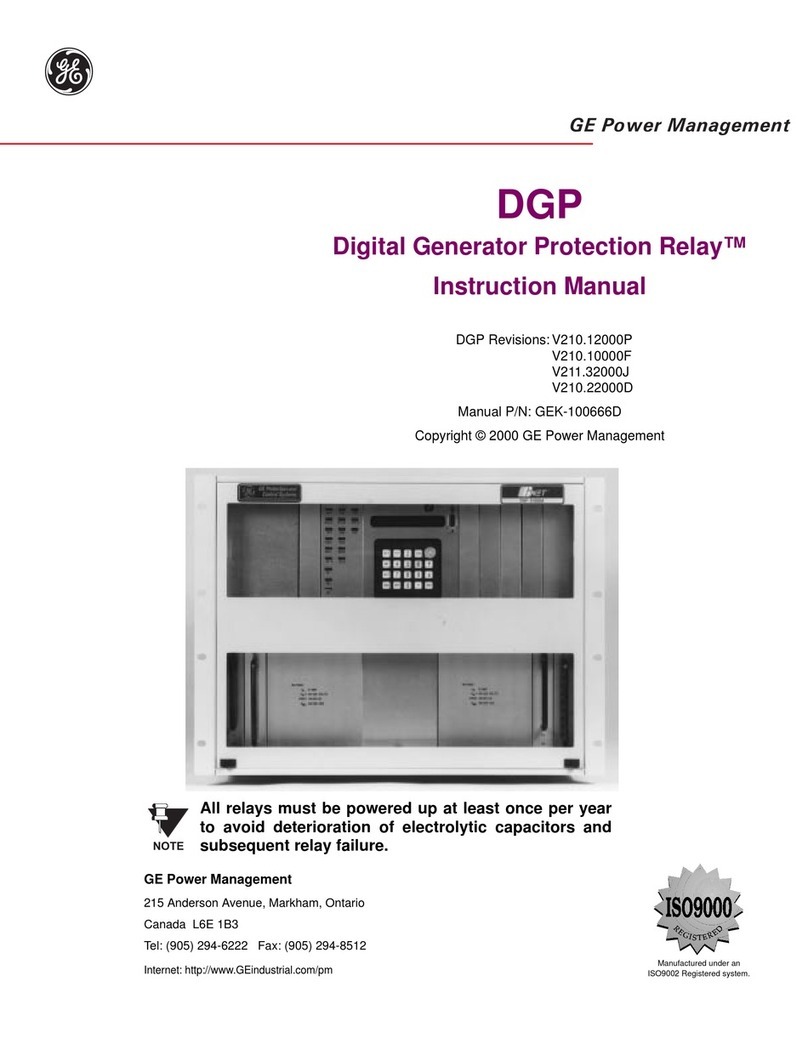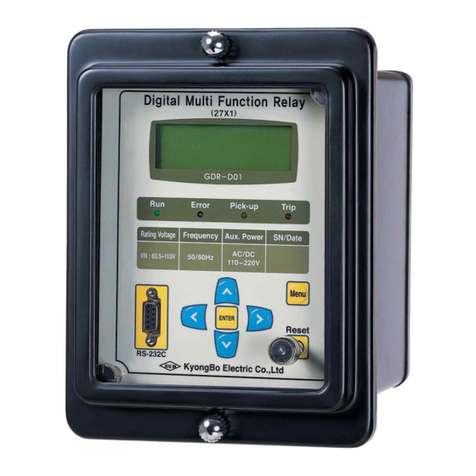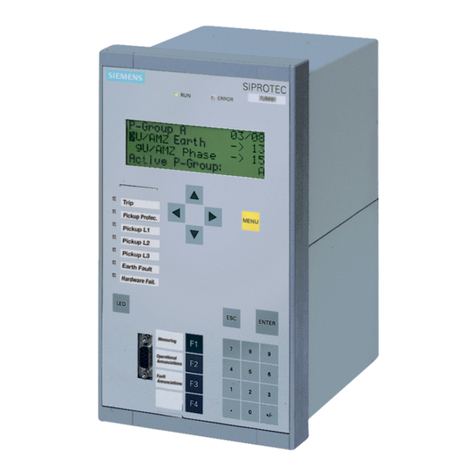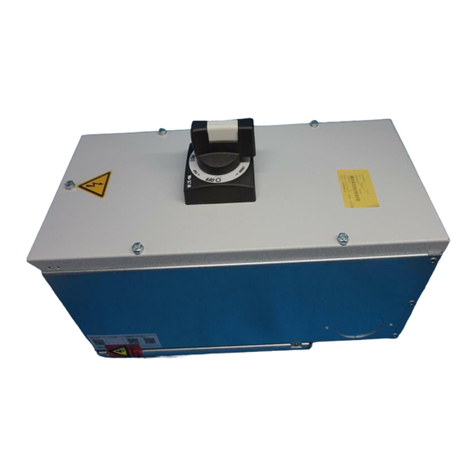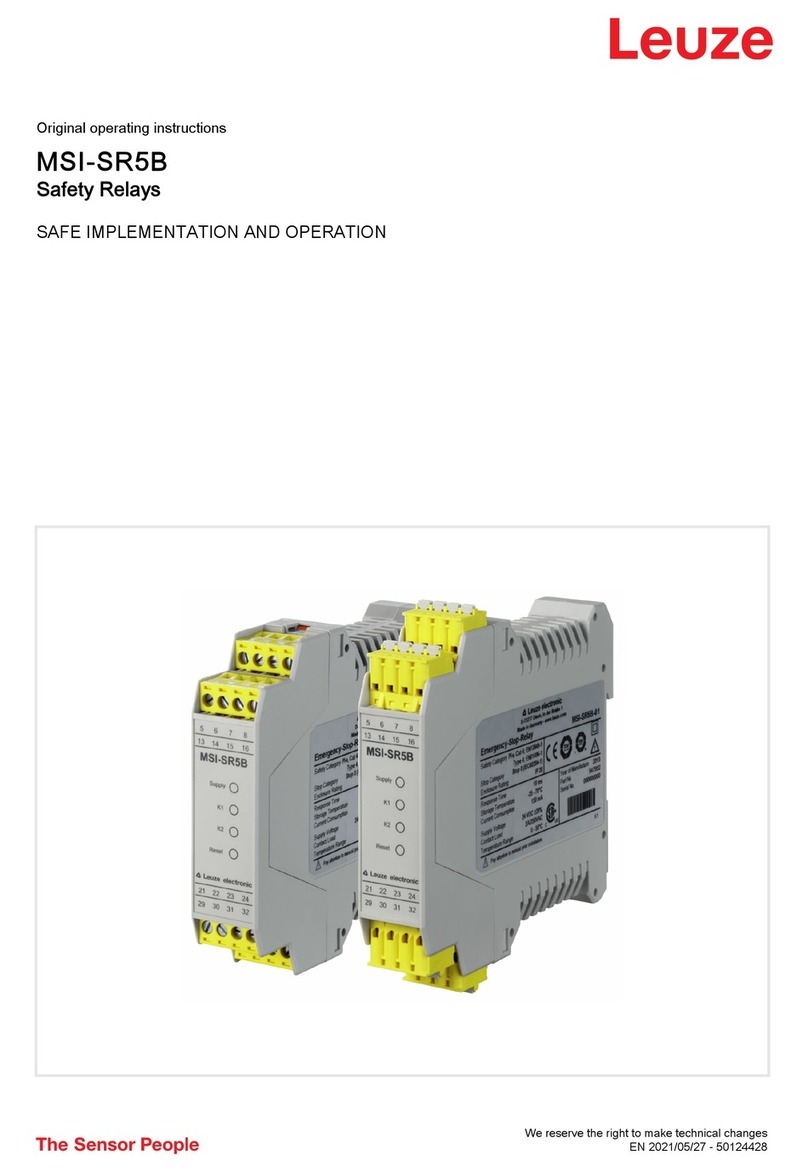
8Three-phase Phase-sequence Phase-loss Relay K8AB-PM Cat. No. N146-E1-02
Safety Precautions
■Precautions for Safe Use
Make sure to follow the instructions below to ensure safety.
1. Do not use or keep this product in the following environments.
•Outdoors, or places subject to direct sunlight or wearing
weather.
•Places where dust, iron powder, or corrosive gases (in
particular, sulfuric or ammonia gas) exist.
•Places subject to static electricity or inductive noise.
•Places where water or oil come in contact with the product.
2. Make sure to install this product in the correct direction.
3. There is a remote risk of electric shock. Do not touch terminals
while electricity is being supplied.
4. Make sure to thoroughly understand all instructions in the
Instructions Manual before handling this product.
5. Make sure to confirm terminal makings and polarity for correct
wiring.
6. Tighten terminal screws firmly using the following torque.
Recommended tightening torque: 0.49 N·m
Maximum tightening torque: 0.54 N·m max.
7. Operating ambient temperature and humidity for this product
must be within the indicated rating when using this product.
8. There is a remote risk of explosion. Do not use this product where
flammable or explosive gas exists.
9. Make sure that no weight rests on the product after installation.
10.To enable an operator to turn off this product easily, install
switches or circuit breakers that conform to relevant requirements
of IEC60947-1 and IEC60947-3, and label them appropriately.
■Precautions for Correct Use
For Proper Use
1. Do not use the product in the following locations.
•Places subject to radiant heat from heat generating devices.
•Places subject to vibrations or physical shocks.
2. Make sure to use setting values appropriate for the controlled
object. Failure to do so can cause unintended operation, and may
result in accident or corruption of the product.
3. Do not use thinner or similar solvent for cleaning. Use commercial
alcohol.
4. When discarding, properly dispose of the product as industrial
waste.
5. Only use this product within a board whose structure allows no
possibility for fire to escape.
About Installation
1. When wiring, use only recommended crimp terminals.
2. Do not block areas around the product for proper dissipation of
heat. (If you do not secure space for heat dissipation, life cycle of
the product will be compromised.)
3. To avoid electrical shocks, make sure that power is not supplied to
the product while wiring.
4. To avoid electrical shocks, make sure that power is not supplied to
the product when performing DIP switch settings.
Noise Countermeasures
1. Do not install the product near devices generating strong high
frequency waves or surges.
2. When using a noise filter, check the voltage and current and
install it as close to the product as possible.
3. In order to prevent inductive noise, wire the lines connected to the
product separately from power lines carrying high voltages or
currents. Do not wire in parallel with or on the same cable as
power lines.
Other measures for reducing noise include running lines along
separate ducts and using shield lines.
To avoid faulty operations,
malfunctions, or failure, observe the
following operating instructions.
1. When turning on the power, make sure to realize rated voltage
within 1 second from the time of first supply of electricity.
2. Make sure to use power supply for operations, inputs, and
transformer with the appropriate capacity and rated burden.
3. Maintenance and handling of this product may only be performed
by qualified personnel.
4. Distortion ratio of input wave forms must be 30% or less. Use of
this product with circuits that have large distortion in wave forms
may result in unwanted operations.
5. Using this product for thyristor controls or inverters will result in
errors.
6. When setting the volume, adjust the control from the minimum
side to the maximum side.

